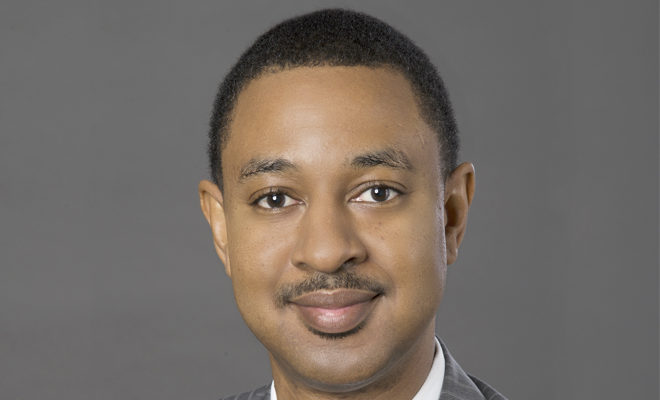
Corporate
AT&T’s Corey Anthony on leading the diversity charge with employees, suppliers and consumers
By Melissa Lowery
AT&T celebrates 50 years as a supplier diversity leader in 2018, a milestone of success that speaks to the company’s commitment to diversity in the workplace/workforce, marketplace and supply chain.
To learn more about AT&T’s overall diversity outlook, as well as how the company is working with the LGBTQ+ community, we spoke with Senior Vice President, Human Resources & Chief Diversity Officer Corey Anthony. Here Anthony shares his philosophy on inclusion, how AT&T insures a welcoming workplace for all, the company’s efforts to include more LGBTBE’s in the supply chain and offering tools to consumers to manage cyberbullying and more.
Melissa Lowery: We’d like our readers to get to know your personal philosophy on Inclusion and more importantly we’d like them to understand AT&T through your leadership lens. What does inclusion mean to you and why does diversity matter at AT&T?
Corey Anthony: Inclusion at its core means unlimited opportunities to succeed for every AT&T employee, regardless of that person’s race, national origin, gender, sexual orientation, age or physical limitations. When we talk about our diversity and inclusion practices, many piece parts create an environment of inclusion. It begins at the top of our corporate structure, with our board of directors and our CEO. These leaders are committed to diversity. That is a key to any company that strives to be more inclusive. Diversity is addressed in the AT&T Code of Business Conduct. It reads: “Differing viewpoints that we each bring to the workplace challenge us collectively to think more broadly and allow us to be more creative in the products and processes we develop.” This is a clear sign that diversity is a core value at AT&T.
Diversity matters because a diverse group of employees can produce more innovative solutions. And it matters because a diverse workforce leads to new thinking and a faster response to every-changing customer needs and the constantly evolving nature of business today.
ML: It’s obvious that the company values diversity overall, but let’s focus on LGBTQ equality. As the world’s largest telecommunications company and a leader in LGBT equality, AT&T has achieved:
• Designation by HRC as Best Places to work for LGBTQ Equality
• Corporation of the Year from the National Gay & Lesbian Chamber of Commerce
• Tyler Clementi Foundation Upstander Legacy Celebration Honoree
• Member of the Billion Dollar Roundtable (inclusive of LGBTQ procurement spend)
• Cyndi Lauper and the True Colors Fund working to end LGBTQ youth homelessness
What’s driving these and other AT&T indicators and demonstrations of excellence?
CA: It’s about respect for all individuals. That’s been the case for quite some time. In 1975, AT&T became one of the first major American corporations to adopt a policy prohibiting discrimination against employees based on sexual orientation. In 1998, AT&T adopted one of the first domestic partner benefits programs for LGBTQ employees. In 2006, we were one of the first U.S. corporations to offer transgender-inclusive health care benefits. In 2015, AT&T was one of hundreds of employers who signed onto a “friends of the court” brief at the U.S. Supreme Court to support the business case for marriage equality. There’s a common theme to these: We mean it when we say everyone should be treated equally.

Justin Nelson, AT&T’s Scott Sapperstein, VP for Public Affairs, and Chance
Mitchell at the NGLCC National Dinner where AT&T was honored as Corporation
of the Year.
Behind that commitment is, as mentioned, a commitment from the senior leadership of AT&T. Valuing diversity is not a new phenomenon here. It has been embedded in our culture for quite some time.
While we don’t set out with the goal of winning awards or accolades, we are pleased when we are recognized, because it validates our belief that we are doing the right things. Earlier this year, Diversity Inc. ranked us #3 on its list of the Top 50 Companies for Diversity. It’s the 17th straight year we’ve been listed in the to 50 and the fourth straight year in the top 10. That’s a sign we are doing many things right.
ML: Tell us a little about what’s happening within AT&T that’s reflected with these external results.
CA: AT&T’s ERG program is a good example of an area where we continue to excel. We have 12 ERGs that represent just about every community represented by our employees, and they also represent the communities we serve—women, African Americans, Asian Americans, Hispanics/Latinos, Native Americans, LGBTQ employees, employees with disabilities, veterans, young professionals and experienced career professionals. There are more than 112,000 ERG memberships. Our ERG program is the envy of many companies. Every year, our national ERG conference books up completely in minutes. This past September, we had more than 2,000 ERG members in the largest meeting room the Hilton Anatole Hotel in Dallas had available. They heard from many of our company’s senior leaders about AT&T’s strategy and how diversity informs every part of what we do.
Keep in mind that these employees are paying their own way to travel to the conference. But AT&T made the decision some years ago to absorb the cost of employees who want to join ERGs. So, if you are an AT&T employee and you want to join an ERG, or two or three of them, there is no direct cost to you. All the group asks is that you be engaged, willing to volunteer and get involved and of course that you have a passion for diversity and inclusion.
Once we provide the foundation for a diverse, inclusive workplace, you’d be surprised at how quickly employees embrace the culture. They feel freer to share their backgrounds and experiences with their co-workers. That leads to open, frank discussions, and that benefits us all because we can more easily get past our differences and focus on the things that we have in common – which, at AT&T, is a commitment and desire to be the best in our industry and a company that innovates and delivers excellent service.
ML: We understand that LEAGUE [AT&T’s LGBTQ ERG] is celebrating 30 years of Pride; how does this and other efforts affirm AT&T’s commitment to your customers, communities, suppliers and workforce?
CA: That is a significant milestone. But just as important to those groups you mentioned is the impact LEAGUE is having. LEAGUE has 30 chapters in 47 states and Puerto Rico. When you look at some of their top accomplishments, it’s clear LEAGUE is making a difference. Members are involved with youth mentoring, developing allies and other important initiatives. The LEAGUE Foundation awards college scholarships to LGBTQ young people. Since 1999, the foundation has awarded more than $200,000 to students.
Another great LEAGUE initiative is its Youth Mentoring Program. It gives members an opportunity to mentor LGBTQ students. The LEAGUE at AT&T transgender discussion group lets members share resources and discuss workplace transition issues.
LEAGUE is clearly doing great work, and there are many are other initiatives we are involved with that are making a difference. For example, this year we launched “Live Proud on Campus” with the Human Rights Campaign. It’s basically a scholarship contest. We asked college students to submit videos describing on-campus LGBTQ advocacy projects they would like to carry out. Then, we let the public vote on the top six videos and select the three winners. Those winners received $10,000 scholarships and mentorships with HRC to help plan their projects.
ML: AT&T also has the #WeAreBold initiative, which encourages LGBTQ+ people to live authentically. It’s very powerful and affirming to the LGBTQ as well as the ally community. There’s no doubt that market drivers dictate that diversity is important for attracting the best and brightest talent and maintaining the competitive edge that creates the “World’s Largest Telecommunications Company.” With that in mind, what makes AT&T a great place to work?
CA: The #WeAreBold initiative is a good example of creating a welcoming workplace. A lot of factors go into making a company a great place to work. I knew when I started working here 22 years ago that it was a workplace where I had unlimited potential. It also became clear very early on in my career that it was important to find a champion or a mentor. My mentor was a great boss I had by the name of Ray Wilkins. He was African American and for me that was a revelation, to see another black man in a position of authority and leadership. That was a visible sign that I could go anywhere I wanted to in this company, if I really wanted to. It takes hard work and dedication but there are no roadblocks to career success at AT&T, regardless of a person’s race or gender or sexual orientation.
Another reason AT&T is a great place to work is that we provide services to people around the globe. The services we provide—communications, entertainment, technology—people use them every day and depend on them. When you have good news to share with your friends or family, what’s the first thing you do? Pick up your smartphone and call or text, send an email or a photo, or post it on social media. Our network makes that possible. It’s a highly sophisticated global network and it takes many very smart individuals to keep it running smoothly. When you watch your favorite TV show and relax with your family in the evening, we are often sending that content to your home—if you have AT&T U-verse or DIRECTV – which I hope you do.
The point is the services we provide are important to consumers and businesses because they are part of the fabric of our lives and commerce. That significance is not lost on our employees. They are proud to give excellent service to customers and they are proud to represent the AT&T brand.
ML: It seems that AT&T began making major strides toward recognizing the LGBTQ community as an important consumer group in the early 1990s with its first direct mail in 1994. How important are strong relationships with the community through philanthropy, supplier diversity and even your corporate sustainability goals for AT&T?
CA: Supplier diversity is absolutely a place where we lead. One of the innovative approaches we pioneered was to connect prime suppliers with smaller diverse suppliers. Diverse suppliers often are small businesses so they don’t necessarily have the resources or outreach capabilities to make a connection with larger suppliers. We created the AT&T Prime Supplier Program 28 years ago to do just that.
Our 2016 supplier diversity total spend was $14.2 billion, up from $13.7 billion in 2015. In 2016, AT&T spent millions of dollars with LGBTQ suppliers. We are continuing to raise the bar on supplier diversity.
Another AT&T supplier diversity milestone last year was the graduation of 12 diverse business leaders from a mentorship program executed by the John F. Kennedy Institute of Entrepreneurial Leadership. In 2016, 17 minority businesses were chosen to attend these highly accredited programs, to help them develop a future growth strategy, share leading edge resources to strengthen marketing efforts, and demonstrate current innovation practices to assist integrating next generation services into their business.
AT&T also collaborated with a disabled veteran-owned supplier to develop a tool called Virtual Matchmaking on Demand. This tool helps diverse suppliers better position themselves to get subcontracting opportunities. It’s been a great success. In 2016, we registered 419 diverse suppliers and arranged more than 100 meetings between prime suppliers and diverse suppliers.
 We are continuing work in other ways to help give diverse suppliers more opportunities. For example, we participated in the Golden Gate Business Association (GGBA) Project Impact Builder in San Francisco this year. One of the main objectives of our participation was for the AT&T Supplier Diversity team was to provide technical assistance to the California LGBTQ business community.
We are continuing work in other ways to help give diverse suppliers more opportunities. For example, we participated in the Golden Gate Business Association (GGBA) Project Impact Builder in San Francisco this year. One of the main objectives of our participation was for the AT&T Supplier Diversity team was to provide technical assistance to the California LGBTQ business community.
We also participated in the NGLCC International Business & Leadership Conference Expo in Las Vegas for the first time this year. We’ve sponsored NGLCC’s national conference for many years, but the Expo was a great experience and provided additional opportunities for us to help connect LGBTBEs with our supplier diversity team.
ML: Although AT&T doesn’t make the device nor does it provide the social platforms that are integral to the lives of most youth, AT&T connects its customers to the world. AT&T has a long history of looking out for its customers through initiatives like the It Can Wait anti-texting campaign and now the “There’s a Soul Behind That Screen” film in conjunction with Common Sense Media. At the 2017 Tyler Clement Foundation Upstander Legacy Celebration, AT&T was honored for its work to end bullying and cyberbullying. How does AT&T support parents in raising safe, responsible, thoughtful digital citizens?
CA: As you said, the It Can Wait campaign is an excellent example of how we looked at one of our core services—wireless communications—and determined that there was a potential for people to be in dangerous situations if they didn’t use the service responsibly. This wasn’t about protecting our image, it was about saving lives and communicating to people that no text is worth a catastrophic accident.
Smartphones and social media have made it so easy to connect with people, but along with that, we see challenges that didn’t exist 10 years ago—before the smartphone came along—like cyberbullying. When we see our services used for nefarious purposes, we have a responsibility to take some action and call it out as wrong.
To your point about raising safe, responsible, thoughtful digital citizens, we have created what we call a “digital literacy program.” Our external affairs teams go to communities and put on workshops to demonstrate everything from the basics of wireless service to issues like cyberbullying and texting and driving. Nowadays, nearly everyone grows up with the Internet and mobile communication devices. But not everyone understands the digital world.
A lot of people are reluctant to attempt online services or even email. The elderly and people living in lower income households are two groups often excluded from the digital world. Some people avoid contact with computers because they are confused or frightened about hacking, security and fraud. We try to alleviate those fears and provide useful information to people about how modern communications services can benefit them and provide convenience, when used responsibly.
ML: It appears that AT&T is doing a great deal in support of diversity and, more importantly, inclusion across the enterprise. What do you see on the D&I horizon at AT&T? How will AT&T continue to lead the way?
CA: We will be true to our values. In the case of diversity, this means continuing to forge new paths to celebrate our uniqueness as a company with a diverse, engaged workforce. We will also continue to empower employees to find their own paths to be champions of diversity.
More and more, organizations are catching on that diverse companies reap rewards. There have been studies that indicate diverse companies are more efficient, nimble, and this has a positive effect on shareowner value. It also means that top diverse candidates coming out of college find themselves in demand. That’s a great thing for those diverse college graduates. We recruit them aggressively. Since other companies, in our industry and other industries, are looking for diverse talent too, we need to show those candidates why AT&T is the company they should choose. And one of the ways we do that is by showing them how at AT&T, diversity isn’t just window dressing. It’s part of our DNA.
Business Equality Pride (BEQPride) is the first publication from the BEQ family of national print and digital magazines exclusively addressing the needs of LGBTQ small-to-medium sized businesses, entrepreneurs and professionals.






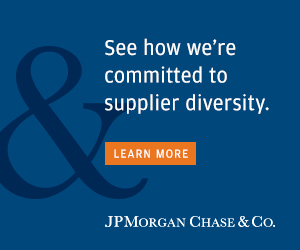
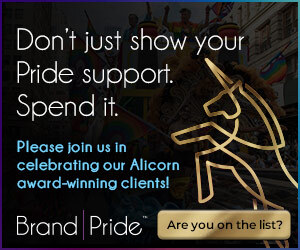
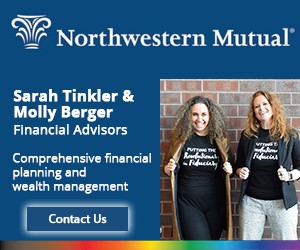
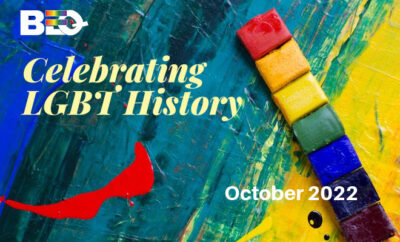







0 comments